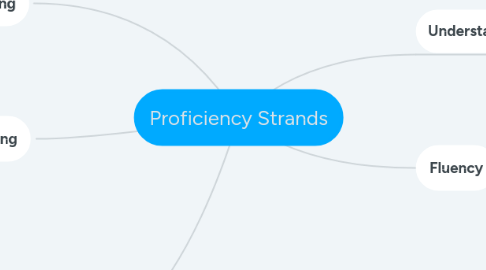
1. Problem-solving
1.1. Foundation Year: At this year level, children begin to sort objects, use materials to model problems, and use familiar counting sequences to solve unfamiliar problems
1.1.1. Year One: Use of materials to model problems, giving and receiving directions to unfamiliar places.
1.1.1.1. Year Two: Involves formulating problems from real situations, making models and using number sentences that represent problem situations.
1.1.1.1.1. Year Three: Involves formulating and modelling real-life situations involving planning methods of data collection and representation, using number properties to continue patterns and making models of three-dimensional objects.
2. Reasoning
2.1. Foundation Year: Being able to explain comparisons of quantities, creating patterns and explaining processes for length comparisons. The children begin to use and understand formal maths language.
2.1.1. Year One: includes explaining comparisons of length using uniform informal units, justifying representations of data and explaining patterns that have been created.
2.1.1.1. Year Two: Children use known facts to obtain strategies for calculations, creating and interpreting simple representations of data.
2.1.1.1.1. Year Three: Involves generalising number properties and results of calculations, comparing angles, and interpreting variations in the data collections and displays.
3. All of the information gathered here to summarise the proficiency strands for Maths F-3 has been sourced from the Australian Curriculum Website (Australian Curriculum, Assessment and Reporting Authority [ACARA], 2014).
4. Understanding
4.1. F Year: Connecting names, numerals and quantities. For example, understanding that each object in the counting sequence may only be counted once. (ACMNA002)
4.1.1. Year One: Connecting names, numerals and quantities, and partitioning numbers in various ways. Partitioning is an effective method to teach children how to visualise maths problems and how begin solving larger problems in their heads.
4.1.1.1. Year Two: Connecting number calculations with counting sequences, partitioning and combining numbers flexibly. Children must also begin to identify and describe the relationship between addition and subtraction and between multiplication and division.
4.1.1.1.1. Year Three: Children are beginning to connect number representations with number sequences, partition and combine numbers flexibly, representing unit fractions, using appropriate language to communicate times, and identifying environmental symmetry.
5. Fluency
5.1. F Year: Children are able to count numbers in sequences, continue patterns, and compare lengths of objects.
5.1.1. Year One: Children can count number in sequences forwards and backwards, name the days of the week and locate numbers on a line.
5.1.1.1. Year Two: Children are able to readily count numbers in sequences and they can use informal units to compare measurements (i.e paddlepop sticks, unifix cubes).
5.1.1.1.1. Year Three: Using familiar metric units to order and compare objects, identify and describe outcomes of chance experiments and interpret maps.

